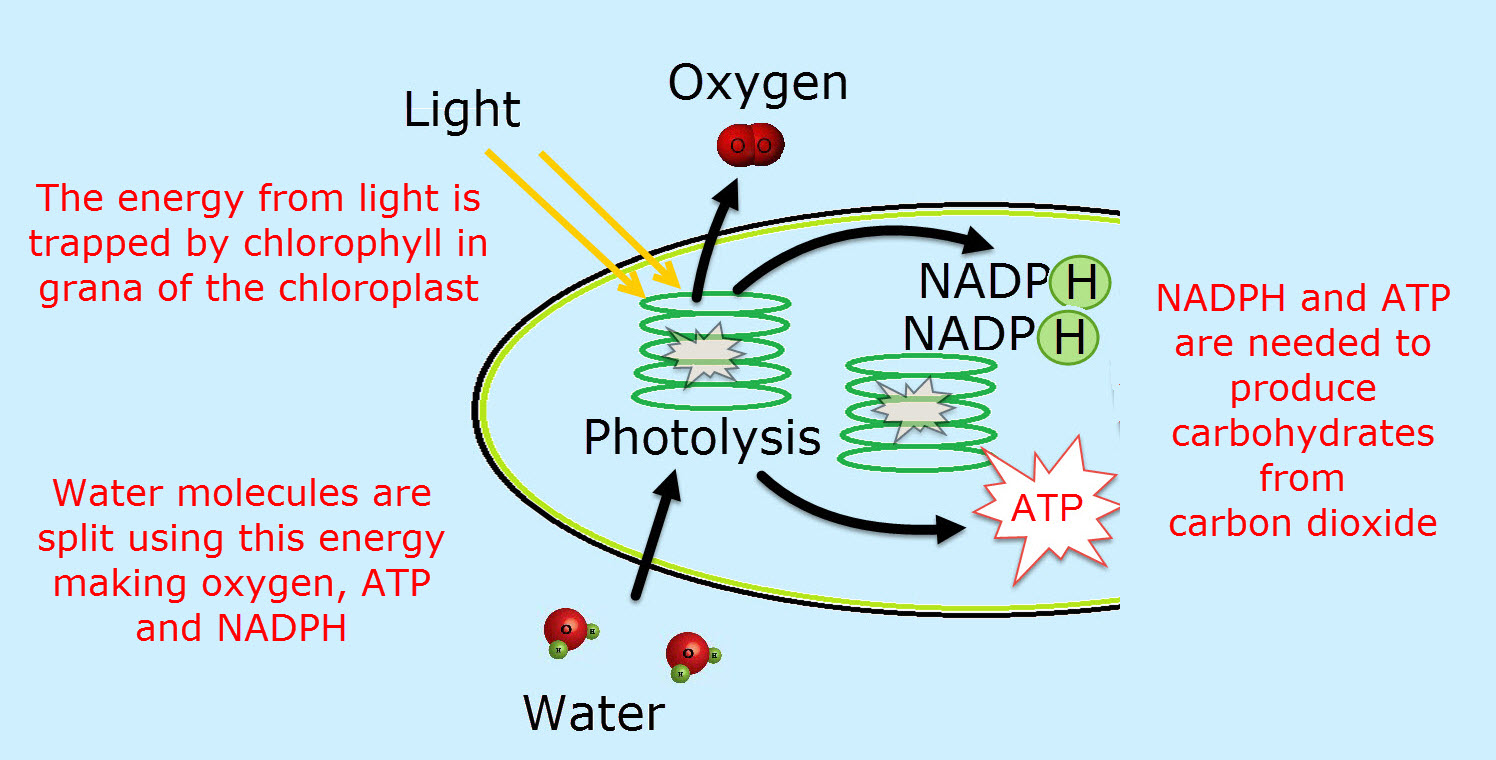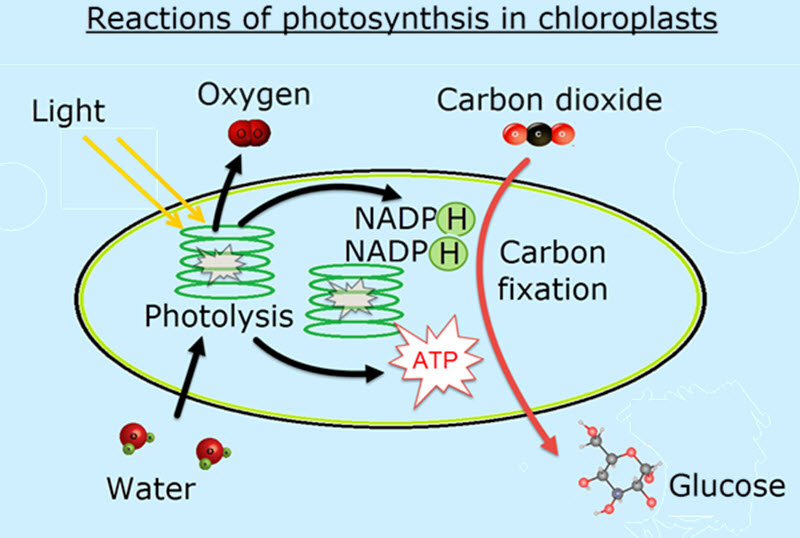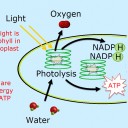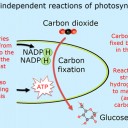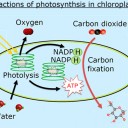Photosynthesis Theory
 Standard level students need to know about photolysis and the light independent reactions which take place in the stroma but with only simple details. This activity leaves out the complexity and gives students a clear understanding of the basic parts of photosynthesis. The second part of the lesson includes a short video and questions about the construction of an absorption spectrum graph.
Standard level students need to know about photolysis and the light independent reactions which take place in the stroma but with only simple details. This activity leaves out the complexity and gives students a clear understanding of the basic parts of photosynthesis. The second part of the lesson includes a short video and questions about the construction of an absorption spectrum graph.
Lesson Description
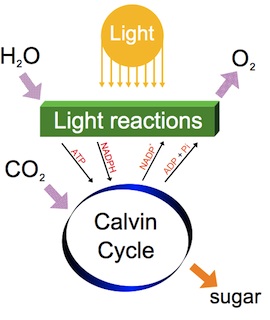 Guiding Questions
Guiding Questions
The equation of photosynthesis is often given as;
6H2O + 6CO2 --> C6H12O6 + 6O2
What role does chlorophyll and the sunlight have in this reaction?
.
Which elements are found in a glucose molecule?
What would need to be added to CO2 to make a carbohydrate like glucose?
Activity 1 - Introduction to the essential concepts for SL
Study the three slides which introduce the two main parts of photosynthesis.
Then answer the questions on the ![]() photosynthesis theory student sheet below.
photosynthesis theory student sheet below.
Questions
- Sunlight is used to split water in 'Photolysis'. What are the two chemicals made from the water?
............................................................................................................................................................ - During the light dependent reactions another molecule which stores energy is made, what is it called?
............................................................................................................................................................ - What happens to the oxygen which was once part of the water molecules?
............................................................................................................................................................ - Carbon fixation incorporates the carbon dioxide into reactions of the stroma. What is the final product of this carbon fixation?
............................................................................................................................................................ - Which molecules from photolysis carry the energy needed to produce carbohydrates from carbon dioxide in the light independent reactions of the stroma?
............................................................................................................................................................
Activity 2 - Absorption of light by photosynthetic pigments
Photosynthesis uses light energy to produce carbon compounds like glucose in cells.
Look at the information below and then answer the questions on the ![]() Photosynthetic pigments student sheet.
Photosynthetic pigments student sheet.
Answer the questions about absorption of light on the worksheet below.
Activity 3 - Video explanation of the way leaves use light.
The following video is an excellent review of light wavelengths and photosynthetic pigments. Make a few summary notes as you watch it.
Teachers' notes
This is an activity specially created for SL students. It give simple explanations of photosynthesis and the action spectrum of chlorophyll A. This topic is developed further in the photosynthesis lesson on the HL topic 'Metabolism'
Activity 1 covers the main points of the reactions of photosynthesis through three slides. It is probably best to explain these slides to students, or (better) have students explain the slides to the class.
Activity 2 looks at the wavelengths of light and the absorption spectrum of chlorophyll.
There is a 'compare' question in the student sheet - beware these require just similarities.
There are model answers here: Photosynthetic pigments model answers. Access to these can be controlled by teachers in the student access area of the site.
From the guide it seem that students are expected to know that violet light has a wavelength of 400nm and red 700nm but that red and blue light are absorbed most and green light least (without reference to wavelengths).
In the skills section it mentions that students should be able to draw an absorption spectrum for chlorophyll and an action spectrum. This is why the sketch graph activity is included, but I imagine that data will be provided in exams.

 IB Docs (2) Team
IB Docs (2) Team

